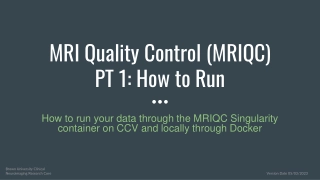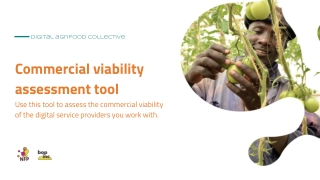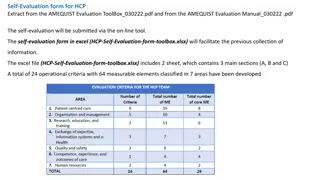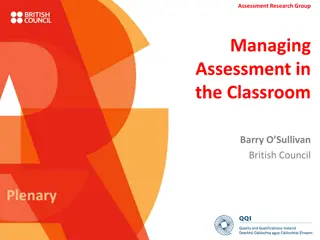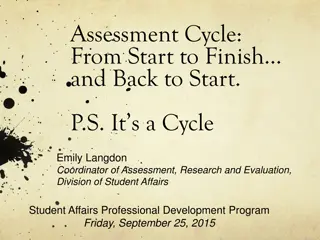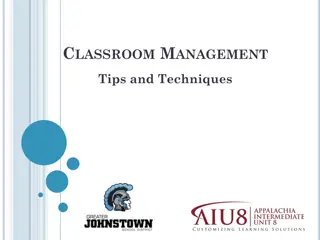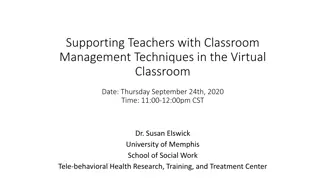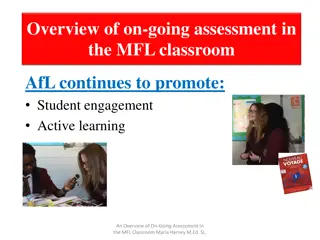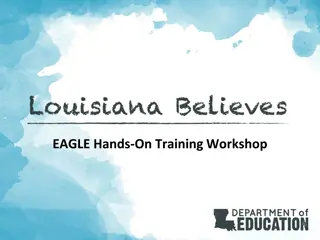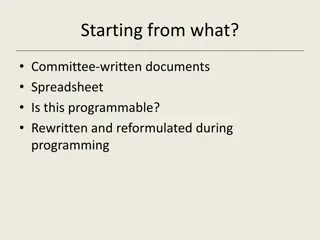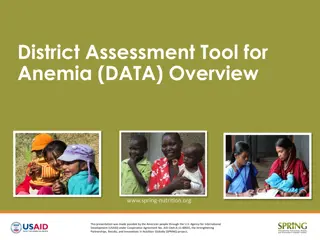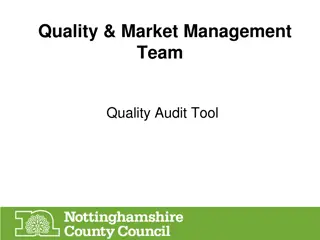Understanding SABR Tool for Classroom Quality Assessment
The SABR tool, funded by the U.S. Department of Education, assesses teacher and child talk during shared book reading to improve language and literacy skills in young children. It provides a systematic approach for measuring classroom quality and aligns with national learning standards. The tool captures key behaviors such as questions, comments, and recasts, benefiting teachers, school leaders, and intervention specialists in promoting effective teaching practices.
Download Presentation

Please find below an Image/Link to download the presentation.
The content on the website is provided AS IS for your information and personal use only. It may not be sold, licensed, or shared on other websites without obtaining consent from the author. Download presentation by click this link. If you encounter any issues during the download, it is possible that the publisher has removed the file from their server.
E N D
Presentation Transcript
SABR 2.2 Short Form (Video)
About SABR The SABR tool examines qualities of teacher and child talk through observation of classroom shared book reading. Developed with funding from the U.S. Department of Education, Institute of Education Sciences, the SABR is a reliable and valid measure of classroom quality. The tool captures the frequency of key behaviors that are known to promote young children s language and literacy skills. The system is well aligned with the national learning standards and state standards for pre-kindergarten through grade 1 levels. It can be used by teachers, school leaders, and intervention specialists to promote effective teaching. Form Behavior Literacy Meaning
Overview: Types of Talk Counted CHILD TEACHER Comments Recasts, extensions in response to C talk Questions Questions Behavior-related Literacy-related Meaning-related
Types of Talk NOT Counted Inaudible talk (follow the Rewind Once Rule) If you cannot hear what someone says, you can rewind one time to attempt to code. If you still cannot hear it, move on. Filler words: Um, aww, oooh, wow Manners: Please, excuse me Yes/no responses: Yes, no, yeah, nah, etc. Overlapping speech (unless a discernable choral response) Teacher praise: Great job!, Right! Exact repetitions: He s sad. He s sad. Talk in a language other than English
Full List of Codes and Speakers TEACHER CHILD Comments Repeat, Recast, Extend Questions Question types Redirections/Reminders Book & Print Conventions Letters, Words, Writing Character Reference Cognition Feelings/Emotions Define/Elaborate on Vocabulary Act Out & Pretend Play Other observations: Author/Illustrator Reference, Predicting Future Text Events, Making Connections, Background Knowledge, Causal Reasoning/Problem Solving, Judgments/Opinions, Desires/Preferences
Coding Decisions Meaning-related (comprehend text) Reference to characters and understanding the text Consider form of utterance (Question, Comment/Directive) Literacy-related (reading words) Print & Book Conventions, Letters, Words Code modifiers for types of T questions Coding Teacher and Child Talk during SABR book reading Filler: Oh, Um, Mmhh, Uh huh, {Gasp}, [sounds], etc. Behavior-related talk Inaudible or abandoned midstream No further code Yes/No: Yes, No, Nope, I don't know, I think so
Goals By the end of this section, you will be able to: Distinguish between comments/directives and questions. Define various forms of questioning and other ways to elicit a response from a listener.
What is classroom discourse? Classroom discourse is a term for the language that teachers and students use to communicate within the classroom. This term includes several concepts: Patterns of conversation can be observed in most classrooms and are believed to shape the learning culture. Some approaches to learning (e.g., Socratic method) prize frequent questioning to actively engage students. Some approaches to learning (e.g., Constructivism) encourage open-ended, discovery questions for deeper learning. Other approaches to learning utilize questions to check student understanding throughout the lesson.
Comments and Directives Comments are a common form in which teachers and children impart information. These statements do not require a response and are typically designed to convey information. Comments are the most common utterance form. This is a lemonade stand.
Examples of Comments Teacher Comments Examples Comments are used to convey information Comments are used to make statements Comments do not demand a response from the listener. He is the king of the jungle. I will keep reading now. Yes, it is! Child Comments Comments are used to convey information Comments are used to make statements Comments do not demand a response from the listener Examples I see a dragon. They have the same pigeon book as us! Yes!
Why did Petunia do that? Questions Question forms allow students to be more active participants. Teacher questions require a response from children. Questions come in many different forms: Auxiliary-Fronted Questions (yes/no questions) Yes/No Questions Turn-Taking Questions Basic wh- Questions Why Questions How Questions Children also elicit information by asking questions.
Question Modifiers Auxiliary-fronted questions An auxiliary verb (can, do, are ) is used at the beginning/front of a question A less formal question that does not include an auxiliary verb, but can be answered with yes/no Yes/No questions Basic wh- questions Who, what, when, where, which + interrogative sentence form Why questions Why + interrogative sentence form How questions How + interrogative sentence form Turn-taking questions Questions that give a child a turn to speak but don t fit another category
Examples of Questions Teacher/Child Questions Examples Auxiliary-fronted questions Do you know what this says? See the giraffe? The giraffe is tall, huh? Yes/No questions Basic wh- question What happened? Why question Why do you think that? How question How did they solve the problem? Turn-taking question Mason?
Practice Yes/No Questions Put your thumb up if the question is an example of a Yes/No Q. You liked the book? Is that fair? Right, friends? See the pigeon? Are you ready? You see a girl?
Practice Turn-Taking Questions Put your thumb up if the question is an example of a Turn-Taking Q. What do you think, Max? Did you like the book, June? Penny? What did you say? Mason, how is Diego feeling? Yes, Clark?
Knowledge Check Distribute the Questions and Exclude Sorting Activity.
Focal Language Modeling Strategies Recasts what a child says by providing a more complete/complex grammatical/syntactic model and/or more accurate meaning/semantics. Extensions and expansions add an idea or complexity to the child s idea.
Recasts Recasting is language modeling that uses at least one key word from the child s own utterance. A recast is a technique used in language teaching to correct learners' errors in a gentle way. The goal is to keep the conversation going (not obstruct communication). Think about the sequence of conversation. The teacher must use at least one of the child s important words to qualify as a recast. Other similar language modeling techniques are included such as repetitions and extensions of the child s utterance.
Examples Language Modeling Examples C: Look, watermelon! T: Watermelon. Repeat C: We goed to the park. T: We went to the park. Recast C: Nice dragon. T: She s pretending to be a nice dragon now. Expand
Practice Identifying Repeated, Recasted, or Extended Utterances Put your thumb up if you would code Repeat/Recast/Extend. T: What do you see on the cover? C: Blocks! T: Good. T: What else? T: Who s always the boss? C: Petunia. T: That s right. T: Petunia s always the boss when they play make-believe. C: There s a dragon! T: You see a dragon? C: He only got 1 color and she got 3. T: Oh, wow. T: That s not fair, is it? T: If she has 3 markers and Diego only has 1? T: What does pout mean? T: Mason? C: Crying. T: Sometimes you pout when you cry. T: So what does your face look like?
Behavior Considering the General Topic Literacy Meaning
Keywords Trump Context! However, follow this important rule when Behavior keywords co-occur with Meaning/Literacy keywords: Behavior keywords Literacy keywords Meaning keywords Code the Literacy or Meaning topics
Coding Modifiers Within the same general topic, modifiers can co-occur Meaning-focused utterance with multiple Meaning modifiers I think it s silly how Pigeon ended up loving the bath. Character Reference Desires/ Preferences Cognition Judgments/ Opinions Within the same utterance, topics can co-occur Literacy-focused utterance with Literacy and Meaning keywords Do you know what letter pigeon starts with? Letters/ Words/ Writing Cognition
Behavior (Redirection/Reminders)
Goals By the end of this section you will be able to: Understand talk focused on managing student behavior.
What is classroom management? Classroom management refers to the skills and techniques teachers to keep students organized, attentive, on task and learning during class. This term includes several concepts: Proactive versus reactive approaches Explanation/communication of rules and procedures Teacher intervention in conflicts or misbehavior Teacher responding to children s bids for attention from the teacher or other students
Examples of Redirections/Reminders Teacher Talk Examples Procedural reminders T: Wait your turn. T: Use your inside voices. T: Move to your spot. Instructions for children s behavior Explanations of why/how children should behave T: We all need to sit on our bottoms so that everyone can see the book. T: I am looking for boys and girls who are sitting nicely because they ll get stickers. Bribes/rewards *An utterance must not contain any literacy or meaning-related talk to get this code.
Examples of Standalone Attention Utterances Teacher Talk Examples T: Eyes on me. T: See the book? Visual attention T: Listen up. T: Can you hear the story? Auditory attention T: Pay attention. T: Boys and girls, let s focus. General attention *An utterance must not contain any literacy or meaning-related talk to get this code.
Practice Identifying Redirections and Reminders I like how Mason is sitting quietly with his hand raised. It makes me sad when friends talk while I m reading. Shhh. Raise your hand if you know what sound this letter makes. I don t think my friends are ready. See the pigeon?
Supporting Literacy during Read-Alouds
Goals By the end of this module you will be able to: Identify ways that teachers talk about book and print conventions during read-alouds Identify places where teachers reference letters, words, and writing during read-alouds
What is print knowledge? Print knowledge is an umbrella term that includes young children s earliest understandings that print and written language carry meaning. This term includes several concepts: Print carries meaning that differs depending on the context, such as story with words or a road sign for safety. Print and books are organized in ways that follow particular rules, such as moving form left to right and on a page. Print is made of letters that each have their own name, shape, and sound(s) associated with them. Words can be written down to convey a message. When you put letters together you make words. Writing is a means for conveying language. Talk about reading helps children understand the cognitive processes involved in decoding written language.
Key Instructional Targets Book and print conventions Letters Words Writing
Book and Print Conventions How to use books Turn pages Manipulate the book Name parts of the book (cover, spine, etc.) Directionality of print in English moves from left to right and we read from top to bottom Name parts of the story (beginning, middle, end) Name or explain the title Name the genre
Examples of Book and Print Conventions Types of talk Examples T: What is this part of the book called? T: That s the spine/cover of the book. Talk about parts of the book Describe how print in English moves from left to right, etc. T: I have to read this book from front to back. Name the title or explain the title is like a name of book. T: What is this book called? T: The title tells you the book s name.
Letters Knowledge that letters make up words Ability to distinguish features of individual letters Understanding that letters map to sounds
Examples of Letters Print Target Examples T: This word starts with the letter C, just like Cathy s name starts with C. Name letters Describe sounds letters make Talk about single letter sounds T: This is the letter M and it says /mmm/. T: Well, what does lion start with? T: Your name starts with a P, too!
Letters in Isolation Look at this alphabet chart. It shows us all of the letters in the alphabet.
Words Ability to identify wordsin text (e.g., I see the word crayon ) Ability to compare and contrast different features of words (e.g., identifying short vs. long words) Understanding concept of word in print; words are distinct units of print Do not use this code when the teacher is talking about word meaning
Examples of Words Print Target Examples Distinguish between letters and words T: There are five letters in Diego s name. Identify sight words T: This says the and this says cool. Identify or ask about rhyming words T: Listen for the rhyming words. T: Those words sound the same. Discusssyllables/phonemes T: They have three parts in their name.
Writing Explain invented spelling Write any words or letters during the lesson Identify that a character is writing Talk about the author s role (writes the words)
Examples of Writing Examples Print Target Explain invented spelling T: That s kindergarten writing. T: Let me write this word for you on the board T: Who can read the letter I wrote? Write any words or letters Identify that a character is writing T: Look at what Diego wrote.
Meaning-Focused Talk during Read-Alouds
Goals By the end of this training you will be able to: Identify comprehension-focused codes surrounding understanding the meaning of the text.
What is text comprehension? Text comprehension is term that refers to how readers and listeners understand and/or make meaning from the text. Talk about text can vary in complexity from literal to inferential. Global inferences and implicit meanings that depend on knowledge (so what?) Explicit, literal meanings in text (who?, what?, when?, where?) Local inferences and implicit meanings bound to text language (why?, how?)
Building Comprehension 1. Extract literal meaning from the text Reference characters Use background knowledge Make personal connections to events/characters 2. Make mental-state references about the text Reference cognition or thinking processes Name emotional states or feelings Reference desires, preferences, judgements, opinions Understand cause/effect of text events Predict future text events/character development
Character Reference Reference characters as proper nouns Pronouns are not sufficient Ask questions to elicit a character s name Types of talk Examples Explicitly reference characters T: Diego s in the writing center. T: Edwina baked cookies! Ask questions that elicit a character s name T: Who went in the house? T: Who s acting like the boss?


